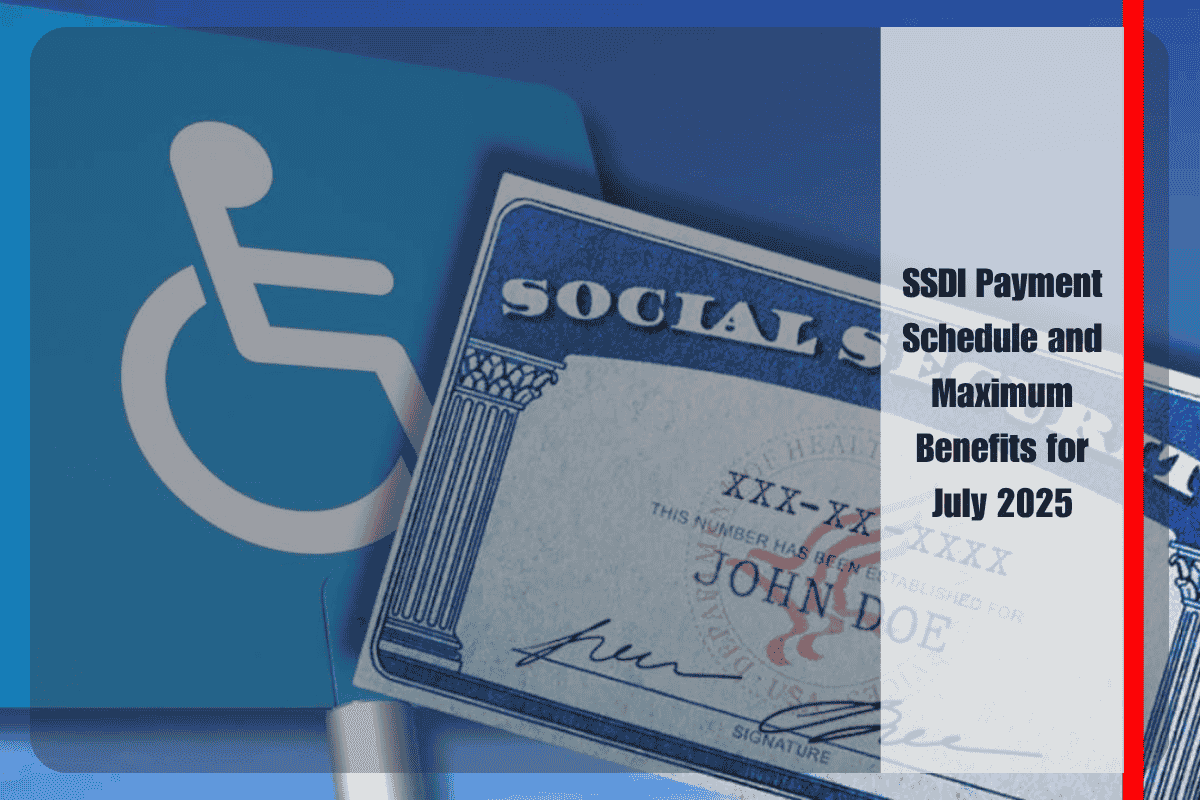The Social Security Disability Insurance (SSDI) program follows a monthly payment schedule set by the Social Security Administration (SSA), which is tied to the date of birth of each beneficiary. For July 2025, these payments will be distributed on specific Wednesdays, with payments assigned based on the date of birth.
SSDI Payment Distribution for July 2025
In July 2025, the SSDI payment schedule includes three specific Wednesdays: the second, third, and fourth Wednesdays of the month. The payment for the second Wednesday, July 9, has already been processed and distributed to beneficiaries born between the 1st and 10th of the month.
The next payment will be on the third Wednesday, July 16, and will cover individuals born between the 11th and 20th of any month. This payment will be disbursed over two days. Finally, the payment for the fourth Wednesday, July 23, will cover beneficiaries born between the 21st and 31st, completing the payment cycle for the month.
Maximum SSDI Benefit for 2025
As of 2025, the maximum SSDI benefit a beneficiary can receive is $4,018 per month. This amount reflects an increase due to the 2.5% Cost-of-Living Adjustment (COLA) applied for the year. It’s important to note that not all beneficiaries will receive this maximum amount.
The actual payment each beneficiary receives depends on several factors, primarily the individual’s work history and the level of contributions made to the Social Security system throughout their working life. The amount is determined based on a specific formula set by the SSA, with the maximum amount reserved for those with the highest level of contributions.
Who Qualifies for the Maximum Payment of $4,018?
Eligibility for the maximum SSDI benefit of $4,018 requires meeting specific conditions related to the length and level of work history. To qualify for this amount, an individual must have worked for at least 35 full years in jobs covered by the Social Security system, contributing a significant portion of their income to Social Security taxes during this time.
The main determining factor is the amount of taxable income accumulated over the years, which must remain close to or equal to the annual taxable limit set by the SSA. For 2025, the maximum taxable amount for Social Security (part of the Old-Age, Survivors, and Disability Insurance (OASDI) program) is $176,100. This means that the first $176,100 of income is subject to a 6.2% tax for both employees and employers, which contributes to the SSDI benefits.
Practical Example of Contributions
To give a practical idea of how contributions work, consider an employee who earns $176,000 in 2025. The employee contributes 6.2% of this amount, while the employer contributes an equal 6.2%. This results in a total contribution of $21,836.40 per worker for that year. For self-employed individuals, they are responsible for both the employee and employer contributions, totaling 12.4%, which also amounts to $21,836.40 if their income meets or exceeds the taxable limit.
The SSDI payment schedule for July 2025 follows a clear structure, with payments made on the second, third, and fourth Wednesdays of the month. The maximum SSDI benefit for 2025 is $4,018 per month, determined by an individual’s work history and contributions to the Social Security system. Those who qualify for the maximum benefit must have a long and consistent record of contributions, with taxable income reaching the annual limit of $176,100.












